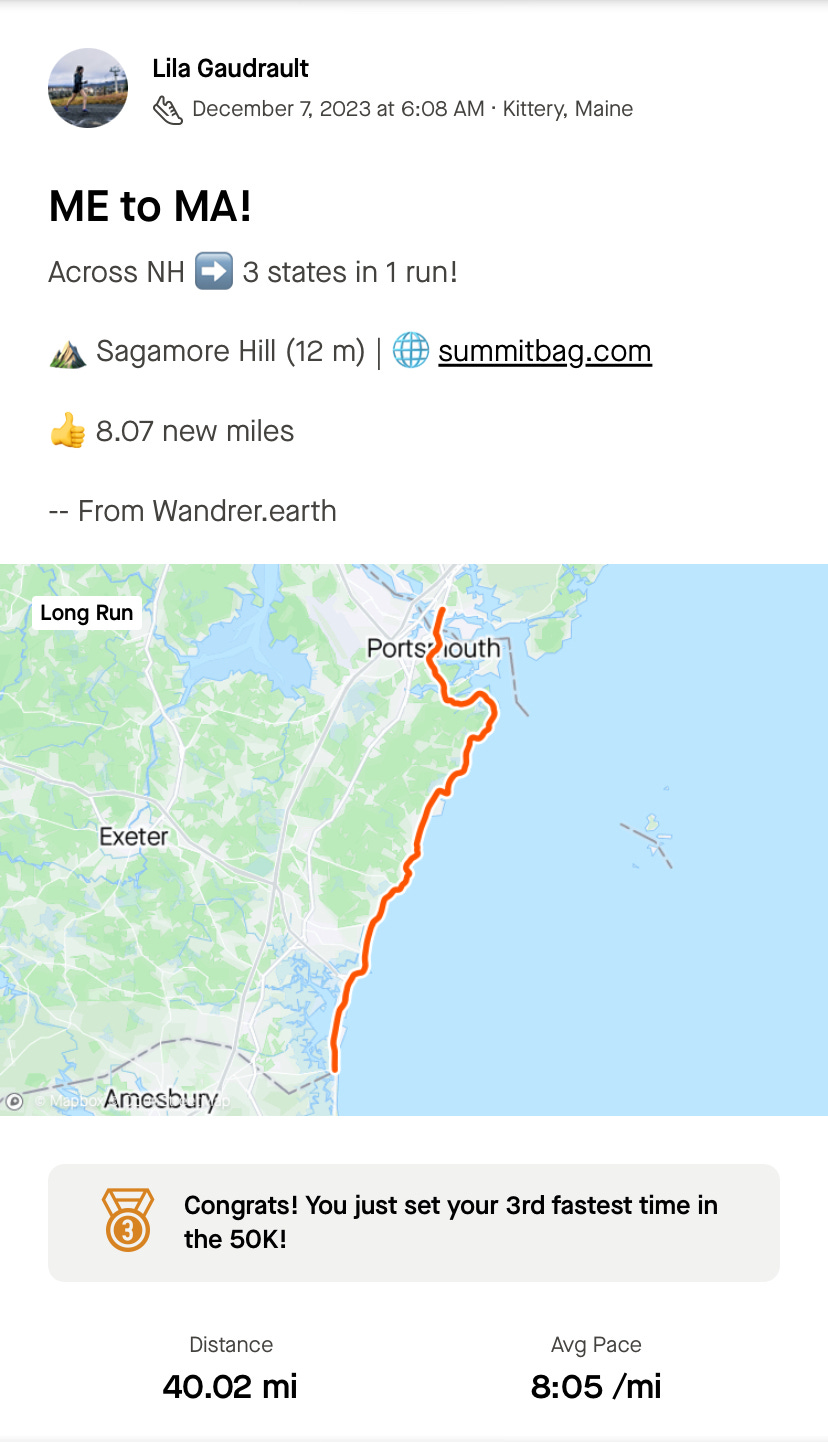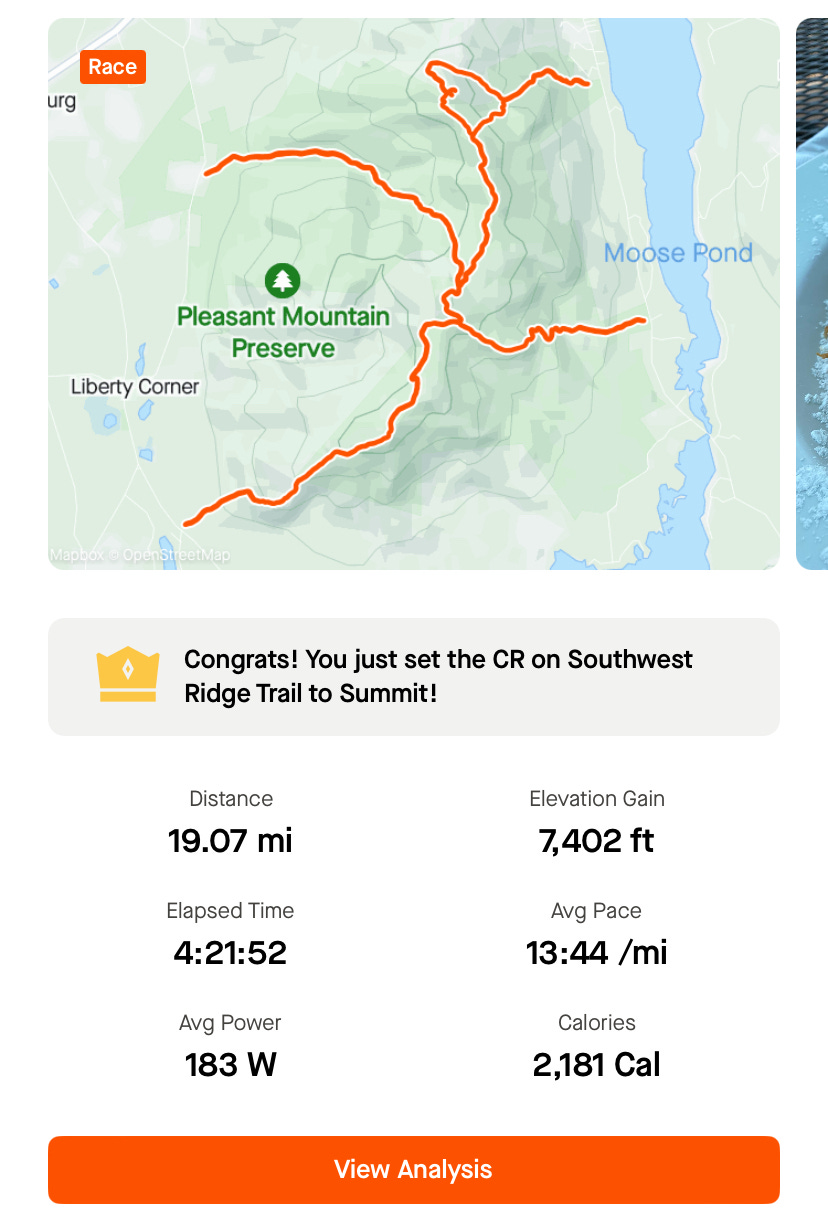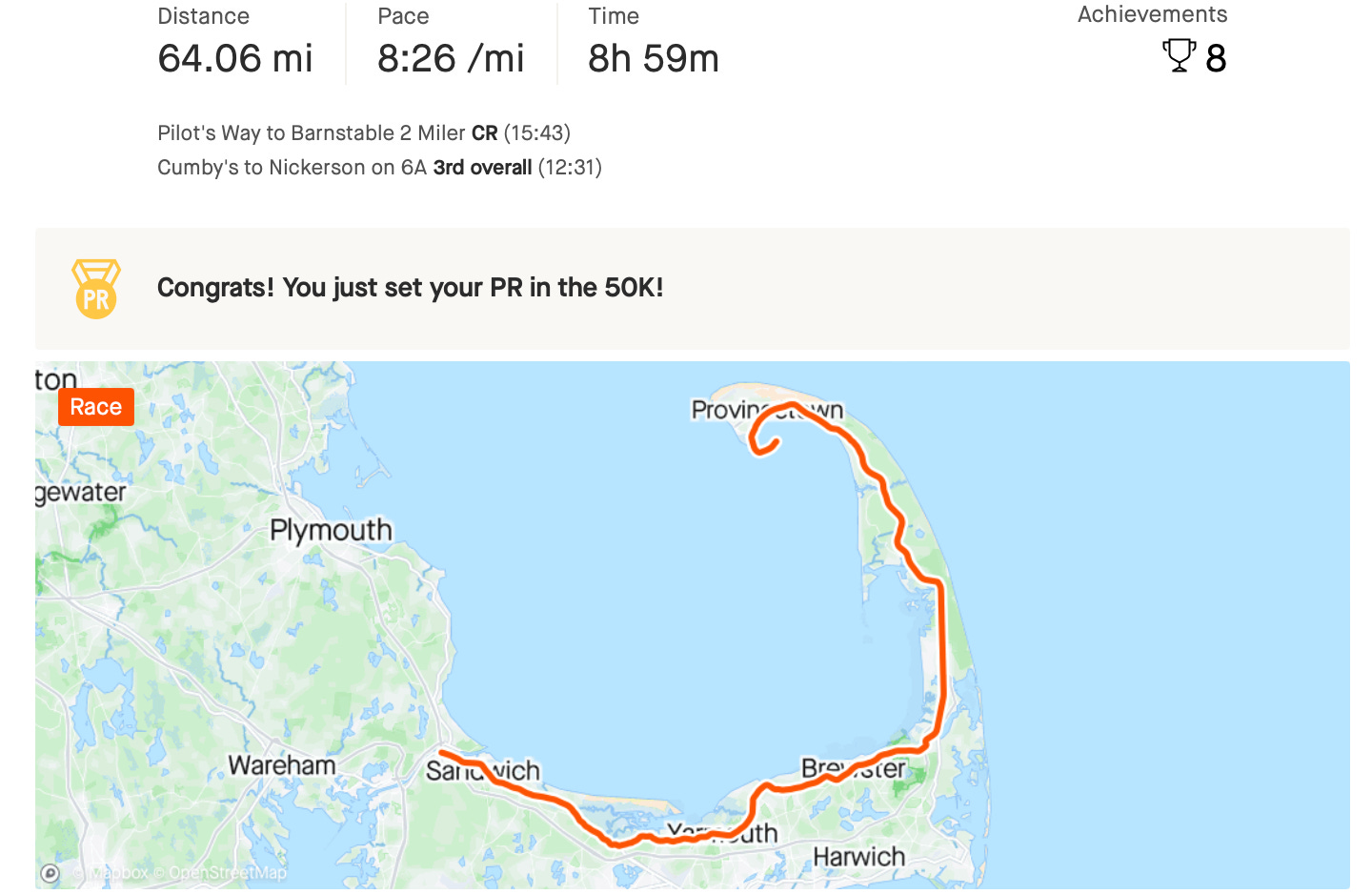I’m the type of runner who genuinely enjoys the process of training. Hopefully that’s the case for most athletes—after all, if you’re out there for the sole purpose of chasing some arbitrary goal, this sport probably won’t bring you a lot of joy or fulfillment in the long term. But even though I would be perfectly happy doing the same basic loop every day, one of my favorite parts of running is the creativity that can exist in training.
Running as a creative outlet can sound a bit odd at first. I’ve never considered myself a creative person—I’m a very concrete thinker and have never had an aptitude for stereotypically creative endeavors like art, music, or theater. Yet I’ve come to realize that my creative outlet is found, in fact, through this sport; through movement. I’m self-coached, and while I’ve considered hiring someone with more expertise than me to plan my training, the thought of giving up the joy I’ve found from building adventures always convinces me otherwise. In this post, I want to share some of my favorite workouts, routes, and challenges I’ve done and hope to do, as well as some advice for making training an experience instead of just a workout.
Tools for Building an Adventure
The #1 tool for planning a training adventure is my race calendar. When thinking of how fast, far, and tough I want the route to be, I consider my upcoming goal races and how the adventure can complement them. I say this mainly as a caution to avoid going too deep into the well before an important race (such as, in my case, running the Tri-State Challenge Run a week before the Boston Marathon!) However, these adventures don’t necessarily need to be specific to my races. My motto has always been that fitness is fitness is fitness. Training for a technical trail race in the mountains? There’s no reason I can’t do a run like the Tri-State Challenge (described below.) Of course, some training needs to be race-specific, but just getting out there and racking up miles is infinitely valuable.
Onthegomap.com is my go-to website for route planning. You can easily cobble together loops on the roads and trails and export GPX files to your watch. My favorite hack is to create a loop of unfamiliar roads to force me to finish a daunting long run—after all, the only sure way back to the car is to follow the watch and finish the miles!
For route inspiration, I often peruse the Fastest Known Time website as well as Strava. Even if I’m not going for an FKT, I can find some fun mountains or trails to explore that I might have not known about otherwise. Same goes for Strava—I love finding long segments to go after or steal fun local routes from people I follow.
My Favorite Adventures
Training adventures don’t need to be super burly and daunting. But they can be. I tend to use adventures as my bigger long runs and stick to more familiar routes for recovery days. Here are a few of my favorite (New England specific) recent adventures and some ideas:
Tri-State Challenge - Starting in Kittery, Maine, I ran over the Memorial Bridge into New Hampshire, hugged the coast along Ocean Boulevard, and turned around roughly 20 miles later when I reached the border of Salisbury, Massachusetts.
Replicate it: Create a route that allows you to cross a state border (or 2!)
Mental hack: On long out-and-backs, I don’t let myself think about the 2nd half of the run until the 1st half is over. For this run, I told myself to “make it to Massachusetts” then “cooldown back to the car.”
Pleasant Quad - This one hurts. There are 4 trails to the top of Pleasant Mountain, the highest peak in Southern Maine. The quad (also an FKT route) involves running up and down each of them. It’s a technical, vert-y challenge.
Replicate it: Many mountains have multiple trails to the summit. Explore all of them in one run!
Lighthouse to Lighthouse: This is a pretty random route I created to spice up a weekend long run. I started at Nubble Lighthouse in York, Maine, ran about 17 miles to Portsmouth Harbor Light, then turned around and ran back.
Another lighthouse challenge: I live in an area with a lot of lighthouses. Last winter, I put together a 20 mile route that included 6 lighthouse stops!
Replicate it: Create a route that includes multiple landmarks, whether it’s lighthouses or something more fun like bakeries (bonus points if you stop and buy treats!)
Cape Cod Traverse: I ran this route as more of a race effort (I was going for the FKT) in January. It’s point-to-point, starting at the Sagamore Bridge and ending at Long Point Lighthouse in Provincetown. The last 3 miles are interesting because you cross a mile-long causeway (accessible only at low tide) then run along the sand to the finishing point, the lighthouse. I was the only one on the beach, and it was a rather dramatic solo finish as I fought to break 9 hours (I ultimately touched the lighthouse in 8:59:57.)
Replicate it: The past few winters, I’ve focused on running longer FKT routes. At a time of year when there are fewer races, FKTs and longer routes are a great way to combat the cold-weather blues and low motivation that often accompanies the season for me.
Challenges in Training
Treadhill vert: I’m not going to lie—every time I run on the treadmill, my opinion of it changes. One day I’ll have a great workout and convince myself I love the challenge of running in place, the next, I’ll be cursing the machine half a mile in. I can’t stand running fast on the treadmill, but often use it for incline sessions. I’ll set the grade to 10-15% and just climb. Living in southern Maine, it’s tricky to find long, sustained climbs that aren’t super technical. The treadhill is a great alternative, and I love setting vert benchmarks and creating challenges based off of them.
Stay mentally engaged: I like to create a playlist of songs, videos, or podcasts that I have to get through before I can step off. Sometimes, I’ll put the playlist on shuffle and tell myself I have to pick up the pace when certain songs come on.
Everest (or something else!): Last winter, I took a nasty fall on an ice patch while descending a mountain. My tailbone was so bruised and painful that I couldn’t run normally for almost a week. However, I found that treadhill jogs at 15% didn’t aggravate it, so I challenged myself to run as much vert as I could that week. I ultimately finished with 38,841 feet, nearly 10,000 more than Mt. Everest. Sometimes, on shorter (or longer) treadhill runs, I’ll choose a mountain and run until I reach the height of its summit instead of going for time or distance.
Every street: This one’s still on my bucket list. Living in a relatively small town, it wouldn’t be too difficult to run every street in a week or so, and I think it would be a fun challenge or way to explore a new place. I have an account with Wandrer that I’ll use to track progress when I decide to tackle this.
Bingo card: Earlier this summer, I created a bingo card of routes, workouts, and goals I hoped to accomplish. Progress has not been too great so far, but we’ll get there! 😁
Cross Training Challenges: I don’t cross train very often. I used to be better about it—I’d cycle or do the stair climber a few times a week to activate different muscles and build general strength—but lately I’ve been putting more energy into the running itself. However, when I do cross train, there has to be some sort of incentive or challenge attached to it. Similar to treadhills, I’ll try to climb a certain number of floors on the stair climber, pick up the pace on the bike when a certain song plays, or, when all else fails, focus on staying engaged and mentally positive when boredom inevitably sets in.
Spice up the surface: Trail running is unpredictable, and I like my training to reflect the variety of different terrains I might encounter. This often means running in some weird places. A few of my favorite “off the beaten path” options include:
Ski mountains (in the off season!) or mountain auto roads
Deep sand or snow (beach, trails after a blizzard, etc.)
Long runs on the track (because I’m training for a 24 hour race on a 1-mile loop!)
Strava vert: Strava will show the elevation instead of pace if you average 100 feet of climbing or more per mile. Sometimes, I’ll try to cobble together enough hills to meet this benchmark without planning the route ahead of time. Living where I do (pretty flat), this can be a big challenge.
I’m always looking for new ways to spice up training, even though running itself is plenty fun and exciting enough 😁 What are your favorite adventures and challenges?










